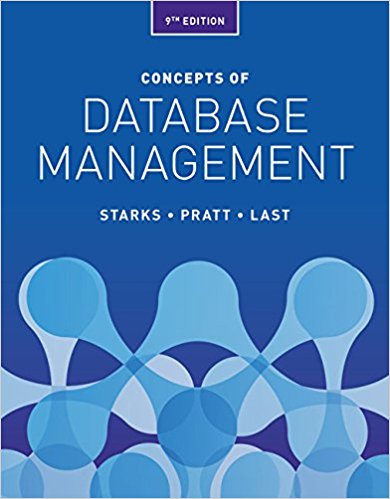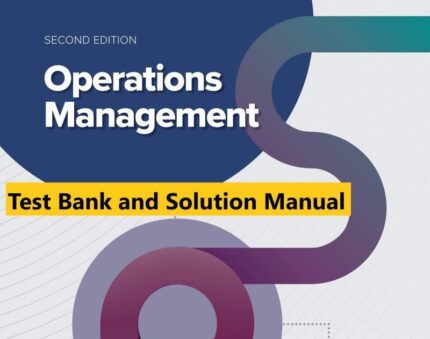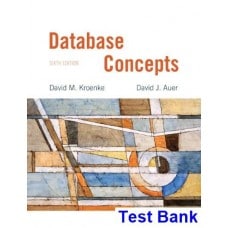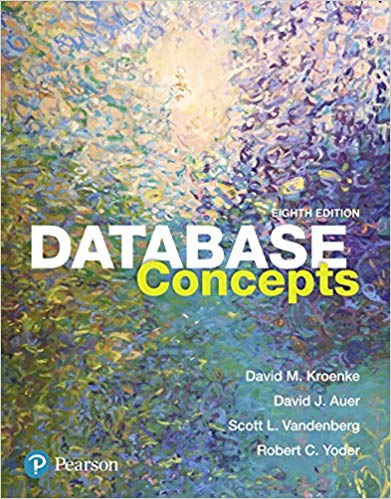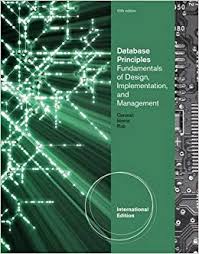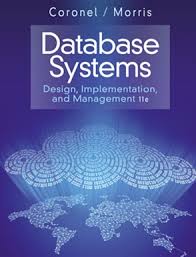Solution Manual for Database Systems 13th Edition by Coronel
Appendix B
The University Lab: Conceptual Design
Discussion Focus
What actions are taken during the database initial study, and why are those actions important to the database designer?
| NOTE
We recommend that you use Appendix B’s Table B.1, “A Database Design Map for the University Computer Lab (UCL),” in this and all subsequent discussions about the design process. The design procedure summary should be used as a template in all design and implementation exercises, too. Student feedback indicates that this blueprint is especially helpful when it is used in conjunction with class projects. Use Appendix B’s Figure B.4, “The ER Model Segment for Business Rule 1,” to illustrate how the database design map was used to generate the initial ER diagram.
|
The database initial study is essentially a process based on data gathering and analysis. Carefully conducted and systematic interviews usually constitute an important part of this process.
The initial study must take its cues from an organization’s key end-users. Therefore, one of the first initial study tasks is to establish who the organization’s key end-users are. Once the key end-users are identified, the initial study must be conducted to establish the following outputs:
- objectives
- organizational structure
- description of operations
- definition of problems and constraints
- description of system objectives
- definition of system scope and boundaries
The database designer cannot expect to develop a usable design unless these outputs are carefully defined and delineated. The importance of having such a list of outputs is self‑explanatory. For example, a database design is not likely to be useful unless and until it accomplishes specific objectives and helps solve an organization’s problems. The inherent assumption is that those problems are usually based on the lack of useful and timely information.
The value of having such a list of required outputs is clear, too, because this list constitutes a checklist to be used by the database designer. The designer should not proceed with the database design until all the items on this list have been completed.
What is the purpose of the conceptual design phase, and what is its end product?
The conceptual design phase is the first of three database design phases: conceptual, logical, and physical. The purpose of the conceptual design phase is to develop the following outputs:
- information sources and users
- Information needs: user requirements
- the initial ER model
- the definition of attributes and domains
The conceptual design’s end product is the initial ER diagram, which constitutes the preliminary database blueprint. It is very unlikely that useful logical and physical designs can be produced unless and until this blueprint has been completed.
Too much “design” activity takes place without the benefit of a carefully developed database blueprint. Implementing a database without a good database blueprint almost invariably produces a lack of data integrity based on various data anomalies. In fact, it may easily be argued that implementing a successful database without a good database blueprint is just as likely as writing a great book by stringing randomly selected words together.
Why is an initial ER model not likely to be the basis for the implementation of the database?
ER modeling is an iterative process. The initial ER model may establish many of the appropriate entities and relationships, but it may be impossible to implement such relationships. Also, given the nature of the ER modeling process, it is very likely that the end users begin to develop a greater understanding of their organization’s operations, thus making it possible to establish additional entities and relationships.
In fact, it may be argued that one very important benefit of ER modeling is based on the fact that it is an outstanding communications tool. In any case, before the ER model can be implemented, it must be carefully verified with respect to the business transactions and information requirements. (Note that students will learn how to develop the verification process in Appendix C.)
Clearly, unless and until the ER model accurately reflects an organization’s operations and requirements, the development of logical and physical designs is premature. After all, the database implementation is only as good as the final ER blueprint allows it to be!
Answers to Review Questions
- What factors relevant to database design are uncovered during the initial study phase?
The database initial study phase yields the information required to determine an organization’s needs, as well as the factors that influence data generation, collection, and processing. Students must understand that this phase is generally concurrent with the planning phase of the SDLC and that, therefore, several of the initial study activities are common to both.
The most important discovery of the initial study phase is the set of the company’s objectives. Once the designer has a clear understanding of the company’s main goals and its mission, (s)he can use this as the guide to making all subsequent decisions concerning the analysis, design, and implementation of the database and the information system.
The initial study phase also establishes the company’s organizational structure; the description of operations, problems and constraints, alternate solutions; system objectives; and the proposed system scope and boundaries.
The organizational structure and the description of operations are interdependent because operations are usually a function of the company’s organizational structure. The determination of structure and operations allows the designer to analyze the existing system and to describe a set of problems, constraints, and possible solutions.
Naturally, the designer must find a feasible solution within the existing constraints. In most cases, the best solution is not necessarily the most feasible one. The constraints also force the designer to narrow the focus on very specific problems that must be solved.
In short, the combination of all the factors we have just discussed help the designer to put together a set of realistic, achievable, and measurable system objectives within the system’s required scope and boundaries.
Related Test Bank
Test Bank For Family-Focused Nursing Care 1st Edition By Sharon A.Denham


